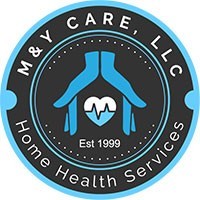Home improvements, modifications, and repairs can help older adults maintain their independence and prevent accidents. Work can range from simple changes, like replacing doorknobs with pull handles, to major structural projects such as installing a wheelchair ramp.
Changes can improve the accessibility, adaptability, and/or universal design of a home. Improving accessibility involves things like widening doorways and lowering countertop and light switch heights for someone who uses a wheelchair. Changes that do not require home redesign, such as installing grab bars in bathrooms, are adaptability features. Universal design is usually built in when a home is constructed. It includes features that are sturdy and reliable, easy for all people to use, and flexible enough to be adapted for special needs.
Evaluating Your Needs
Before any changes are made to the home, evaluate your current and future needs room by room. Once you have explored all areas, make a list of potential problems and solutions. Several checklists are available to help you conduct an initial review.
Financial Assistance
Minor improvements and repairs can cost between $150 and $2,000. Many home remodeling contractors offer reduced rates or sliding-scale fees based on income and ability to pay. Public and private financing options may also be available. Sources of support include the following.
- Modification and repair funds provided by the Older Americans Act are distributed by Area Agencies on Aging (AAA). To contact your local AAA, contact the Eldercare Locator at 1-800-677-1116 or https://eldercare.acl.gov.
- Rebuilding Together, Inc., a national volunteer organization, is able to assist some low-income seniors through its local affiliates. Visit http://rebuildingtogether.org to learn more.
- Local energy and social service departments can assist through the U.S. Department of Energy’s Low-Income Home Energy Assistance Program (LIHEAP) and Weatherization Assistance Program (WAP). You can also search for state-specific tax credits, rebates, and savings at http://energy.gov/savings.
- Many cities and towns make grant funds available through their local departments of community development.
- Lenders may offer home equity conversion mortgages or reverse mortgages that allow homeowners to utilize home equity to pay for improvements. Learn more by visiting https://www.ncoa.org/economic-security/home-equity/.
- Search for additional resources in your state by visiting www.Homemods.org.
Hiring a Contractor
For some repairs and improvements, you may choose to hire a professional contractor without a public assistance program. In that case, keep these important tips in mind.
- Make sure the contractor is licensed, bonded, and insured for the specific type of work.
- Check with your local Better Business Bureau and Chamber of Commerce to see whether any complaints against the contractor are on file.
- Talk with family and friends to get recommendations based on their experiences. Contractors with good reputations can usually be counted on to do a good job again.
- Ask for a written agreement that specifies the exact tasks and timeline.
- Your agreement should outline the total estimated cost and require only a small down payment. The terms should require balance payment when the job is completed.
- Consider asking a trusted friend or family member to help you review the contract and/or monitor work throughout the project.

